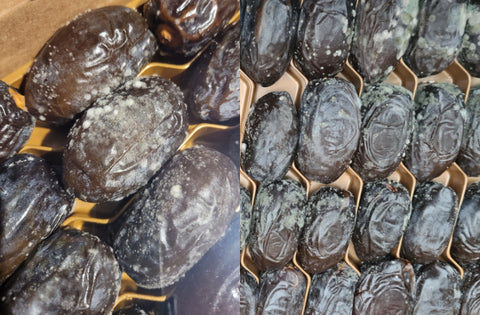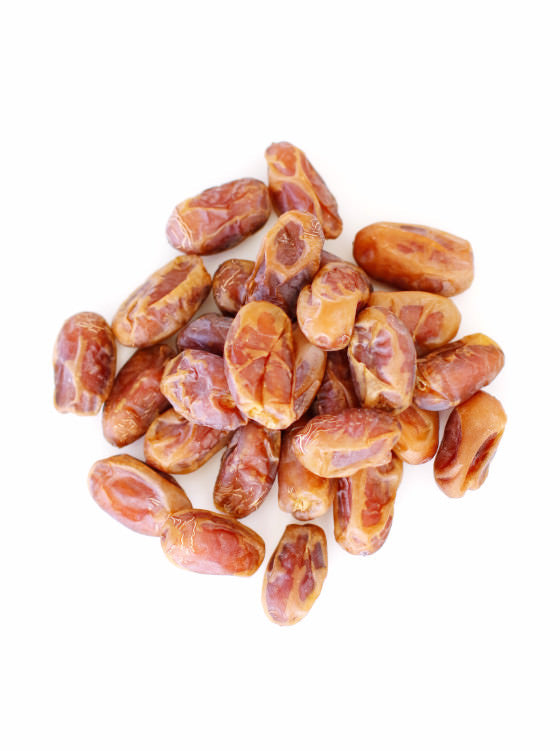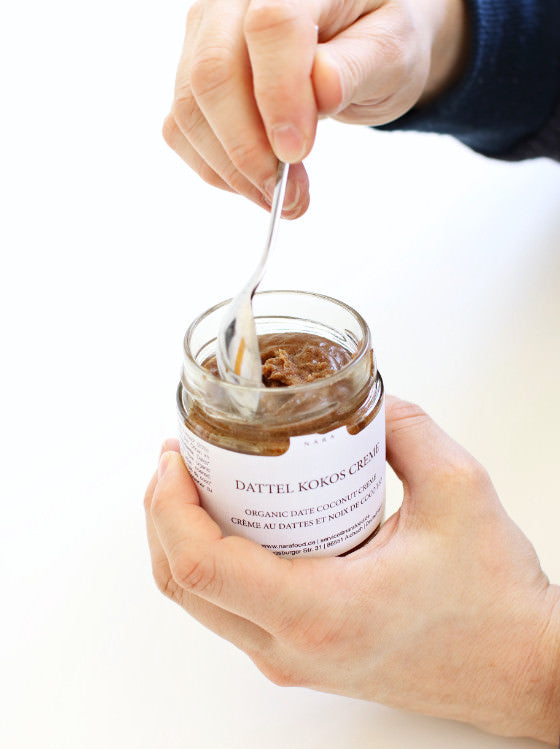Dates can grow mold - just like all fruits that contain water. Even dried dates can become moldy, although the risk is greater in fresh fruit with a higher water content. It is very important for you to recognize mould on dates. On the one hand, you should not eat moldy fruit under any circumstances. On the other hand, with a little know-how you can clearly distinguish harmless appearances on dates from mold so that you don't accidentally throw away valuable food. By storing dates correctly, you can also prevent your dates from spoiling in the first place. Here we provide you with the knowledge you need to enjoy your dates safely and carefree.
Stock up on enjoyment: take advantage of the dates' long shelf life
Dates are one of the fruits that have a particularly long shelf life. Fresh dates can be kept for weeks or even months if stored correctly. Dried dates are "naturally" suitable for an extended storage period; some varieties even keep for several years! Find out here how to store dates so that they don't get moldy or spoil. Correct storage also ensures that the taste and consistency of the fruit is preserved and that you can enjoy your high-quality food for a long time. The most important rules for storing dates are summarized below:
- Fresh dates ideally belong in the fridge.
- Fresh dates can be frozen for even longer preservation.
- The juicier the dates, the more important it is to store them in a cool place.
- You should not put fresh dates in airtight containers at room temperature to avoid mold on the dates.
- Dried dates do not develop mold if they are stored in a dry place. They are easy to store and tolerate room temperature and temperature fluctuations relatively well.
Recognizing mould on dates and distinguishing it from other phenomena
Dates with mold can look very different: Mold is often white, but it can also be black or greenish. Mould can usually be recognized by its fluffy or fibrous structure. The mold is often found where the date sat on the panicle and spreads from there over the fruit. It can be visible from the outside or the inside. If you see white, fluffy areas or the date has black spots in the flesh, you should dispose of the fruit. It does not help to cut away the affected areas: The mold has a fine, virtually invisible mycelium that in most cases runs through the entire fruit. As soon as you discover an obviously moldy date in a package, you can generously throw away the surrounding fruit. However, a moldy date in a package is no reason to throw the entire box of dates in the trash!

→ The dates in this photo are clearly moldy. If your dates look like this, you will unfortunately have to throw them away.
→ IMPORTANT: With dried dates, it is sometimes impossible to tell from the outside if they are moldy! We therefore recommend breaking open or cutting open the dates before eating them to take a look inside. In the countries of origin of the "desert fruit", people do the same. In good light, you will immediately see black spots in the flesh, which can be a sign of mold toxins (aflatoxins or ochratoxin A).
White spots on the date: is it mold or sugar?
If dates have mold, in many cases it is white. However, white colorations or structures are not a clear sign of mold infestation!
The "sugar bloom": Not at all problematic
Dates can also "sugar bloom": they then form white balls or crumbs:
- Sugar crystals on the outside: Form where the skin of the fruit is damaged or slightly crushed.
- Sugar crystals on the inside: Sometimes you can't see the sugar crystals on the outside of a date, but they are very sugary on the inside.
This sugaring, also known as "sugar bloom", is no reason to throw away the affected dates! The fruit is perfectly edible. Some date lovers even like the slightly crunchy texture!
→ The juicier the dates are, the more often the "sugar bloom" occurs. In addition to sugar (and mold), white spots on dates can also come from the waxy substance of the skin. This is also completely harmless.

→ The dates in these photos clearly have completely harmless sugar spots.
Black powder inside: A (one-off) case for the garbage can
You can observe another phenomenon in Medjool dates: A kind of black powder or dark flour inside the fruit. This is not mold. Rather, the contamination is caused by an insect that stung the date while it was growing on the tree. Don't worry: the insect is long gone by the time you make the discovery and is not inside the date. A fruit that has been altered in this way will not "infect" the other dates in the same packaging. Simply throw away the affected fruit, but do not dispose of the entire batch.

→ This photo shows a date that is infested with "black dust" on the inside. As this can occur from time to time (with the Medjool and rare Wanan varieties), it is advisable to cut the dates open before eating them.
Medjool dates & mold
As already mentioned, it is the juicy fruits that are more easily attacked by mold: Mold needs moisture to develop. This is why fresh dates need to be checked and stored with particular care. In our experience, the juicy Super Fresh dates are the most likely to attract mold, especially the fresh Medjool Super Fresh. This type of date is a special treat with its soft and juicy texture, which is why it is worth being careful with it: Be sure to store them in the freezer compartment to effectively prevent mold. If you eat the dates within a few days, storing them in the fridge is also sufficient. If you eat the dates quickly and store them outside the fridge, it is important that the storage container is not sealed airtight. If the fruit is exposed to air, it will lose some of its moisture but will not go moldy as quickly. If you don't have enough space in the freezer for the Medjool Super Fresh dates, we recommend ordering the "regular" Medjool dates instead. These still have a luscious, soft flesh and will keep in the fridge without any problems.
If you want to wash the dates, bear in mind that this also adds moisture. You should either eat washed fruit straight away or allow it to dry well before putting it back in a box.

→ Medjool Super Fresh dates are the most susceptible to mold. Please store these dates in the freezer to prevent them from going bad.
Mold on dates: Import has improved
You can buy dates from us that are produced organically and fairly. They are not chemically treated, but do not go moldy more often than other dates. As a specialized company, we also have more opportunities to carefully check the quality of our goods. We rarely miss insect bites, but in some cases they are invisible even to the sharpest eyes.
The good news for the general public is that the overall quality of imported dates has improved significantly in recent years.
In short: Frequently asked questions on the subject
What do moldy dates look like?
Mould can be recognized by the fluffy or fibrous structure of the infestation. Black spots in the flesh can also be a sign of mold.
Is a white coating on dates mold?
Not necessarily. It may be the waxy skin or sugaring (see above). The consistency of the coating is important in order to identify its cause.
Are dates white on the inside?
Some types of dates look white on the inside.
What are the black spots in dates?
If they are spots, it may be an indication of mold infestation. If the spots consist of small crumbs, they may be caused by an insect. In any case, it is better to throw away dates with black spots.
Can dates be stored in the fridge?
You can and it is usually even recommended - especially for fresh dates. The juicier the dates, the cooler they should be stored. Juicy dates can/should even go in the freezer!













